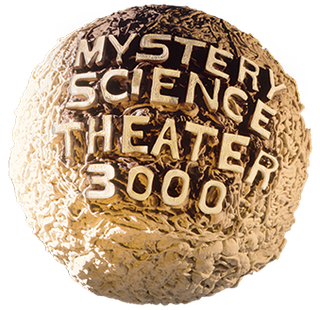
Mystery Science Theater 3000 is an American science fiction comedy film review television series created by Joel Hodgson. The show premiered on KTMA-TV in Minneapolis, Minnesota, on November 24, 1988. It then moved to nationwide broadcast, first on The Comedy Channel/Comedy Central for seven seasons until its cancellation in 1996. Thereafter, it was picked up by The Sci-Fi Channel and aired for three more seasons until another cancellation in August 1999. A 60-episode syndication package titled The Mystery Science Theater Hour was produced in 1993 and broadcast on Comedy Central and syndicated to TV stations in 1995. In 2015, Hodgson led a crowdfunded revival of the series with 14 episodes in its eleventh season, first released on Netflix on April 14, 2017, with another six-episode season following on November 22, 2018. A second successful crowdfunding effort in 2021 produced 13 additional episodes shown on the Gizmoplex, an online platform that Hodgson developed which launched in March 2022. As of 2023, 230 episodes and a feature film have been produced as well as three live tours.
Apollonia or Apolonia may refer to :

Joel Hodgson is an American writer, comedian and television actor. He is best known for creating Mystery Science Theater 3000 (MST3K) and starring in it as the character Joel Robinson. In 2007, MST3K was listed as "one of the top 100 television shows of all time" by Time.
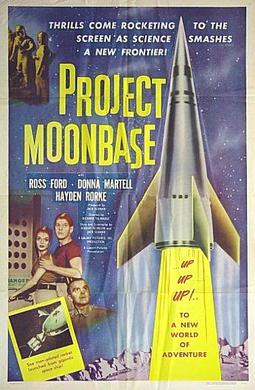
Project Moonbase is a 1953 independently made black-and-white science fiction film, produced by Jack Seaman, directed by Richard Talmadge, and starring Ross Ford, Donna Martell, Hayden Rorke. It co-stars Larry Johns, Herb Jacobs, Barbara Morrison, and Ernestine Barrier. The film was distributed by Lippert Pictures and is based on a story by Robert A. Heinlein, who shares the screenwriting credit with producer Jack Seaman.

Extra Terrestrial Visitors is a 1983 science fiction film directed by Juan Piquer Simón. The film's original draft was meant to be a straightforward horror film about an evil alien on a murderous rampage, but the producers demanded script alterations in order to cash in on the success of Steven Spielberg's E.T. the Extra-Terrestrial by featuring a child and a cute, lovable alien.
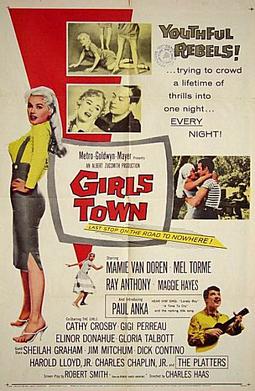
Girls Town is a 1959 American drama film directed by Charles F. Haas and starring Mamie Van Doren, Mel Tormé, and Ray Anthony. Paul Anka also appears in his first acting role. Van Doren stars as a juvenile delinquent who is sent to a girls' school run by nuns, where she finds herself unable to help her sister. The film capitalizes on the 1950s rebellious-teen exploitation films, with catfights, car races, music from Anka and The Platters, and sexy outfits.

The Brain That Wouldn't Die is a 1962 American science fiction horror film directed by Joseph Green and written by Green and Rex Carlton. The film was completed in 1959 under the working title The Black Door but was not theatrically released until May 3, 1962, under its new title as a double feature with Invasion of the Star Creatures.

San Francisco International Airport is a television drama that was originally aired in the United States by NBC as a part of its 1970–71 wheel series Four in One.

The Final Sacrifice is a 1990 independent Canadian adventure film produced and directed by Tjardus Greidanus, a freshman at Southern Alberta Institute of Technology, and stars Christian Malcolm and Bruce J. Mitchell. It faded into obscurity not long after its release but saw a renewed interest following its exposure on Mystery Science Theater 3000.

The Corpse Vanishes is a 1942 American mystery horror film starring Bela Lugosi, directed by Wallace Fox, and written by Harvey Gates. Lugosi portrays a mad scientist who injects his aging wife with fluids from virginal young brides in order to preserve her beauty. Luana Walters as a journalist and Tristram Coffin as a small-town doctor investigate and solve the disappearances of the brides. The film was produced and distributed by Monogram Pictures, and was reissued in 1949 by Favorite Films Corporation.

Time Walker is a 1982 science fiction horror film directed by Tom Kennedy.

Warrior of the Lost World is a 1983 Italian-American post-apocalyptic science fiction film written and directed by David Worth and starring Robert Ginty, Persis Khambatta, and Donald Pleasence. It was created and first released in Italy under the title Il Giustiziere della terra perduta in 1983 during the wide popularity of the Mad Max films, and many subsequently created post-apocalyptic films of the 1980s. Later the film was given another Italian title for VHS and television markets, I predatori dell'anno Omega.
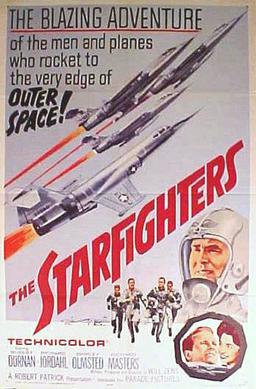
The Starfighters is a 1964 American Cold War film written, produced and directed by Will Zens, and starring Bob Dornan, Richard Jordahl and Richard Masters. In an unusual twist based on the storyline of a pilot and his congressman father, pilot and actor Dornan would seek and win election as a U.S. congressman in California.

American Playhouse is an American anthology television series periodically broadcast by Public Broadcasting Service (PBS).
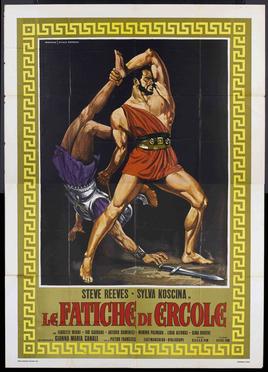
Hercules is a 1958 Italian sword-and-sandal film based upon the Hercules and the Quest for the Golden Fleece myths. The film stars Steve Reeves as the titular hero and Sylva Koscina as his love interest Princess Iole. Hercules was directed by Pietro Francisci and produced by Federico Teti. The film spawned a 1959 sequel, Hercules Unchained, that also starred Reeves and Koscina.
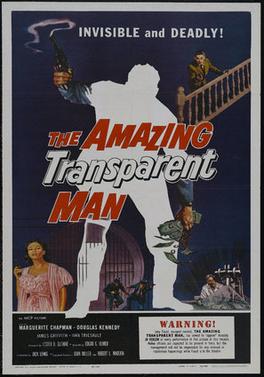
The Amazing Transparent Man is a 1960 American science fiction thriller B-movie starring Marguerite Chapman in her final feature film. The plot follows an insane ex–U.S. Army major who uses an escaped criminal to steal materials to improve the invisibility machine his scientist prisoner made. It was one of two sci-fi films shot back-to-back in Dallas, Texas by director Edgar G. Ulmer. The combined filming schedule for both films was only two weeks. The film was later featured in an episode of Mystery Science Theater 3000.

Soultaker is a 1990 American fantasy horror film written by Vivian Schilling and directed by Michael Rissi. It stars Joe Estevez in the title role, alongside Vivian Schilling, Gregg Thomsen, Chuck Williams, Robert Z'Dar, and David "Shark" Fralick. The film follows a group of young adults who try to flee from the titular "Soultaker" when their souls are ejected from their bodies after a car accident. Inspired by discussions with Action International Pictures producer Eric Parkinson, the script was based on a real-life car accident which Schilling was involved in.

Radar Secret Service is a 1950 action film starring John Howard, produced by Barney A. Sarecky and directed by Sam Newfield. The film was featured on the American television show Mystery Science Theater 3000.

Teen-Age Crime Wave is a 1955 American juvenile delinquency film noir crime film directed by Fred F. Sears and starring Tommy Cook and Molly McCart. It was released by Columbia Pictures. The plot concerns a pair of delinquent teens who go on a statewide shooting spree after escaping from reform school.

Cry Wilderness is a 1987 family adventure film directed by Jay Schlossberg-Cohen.



















